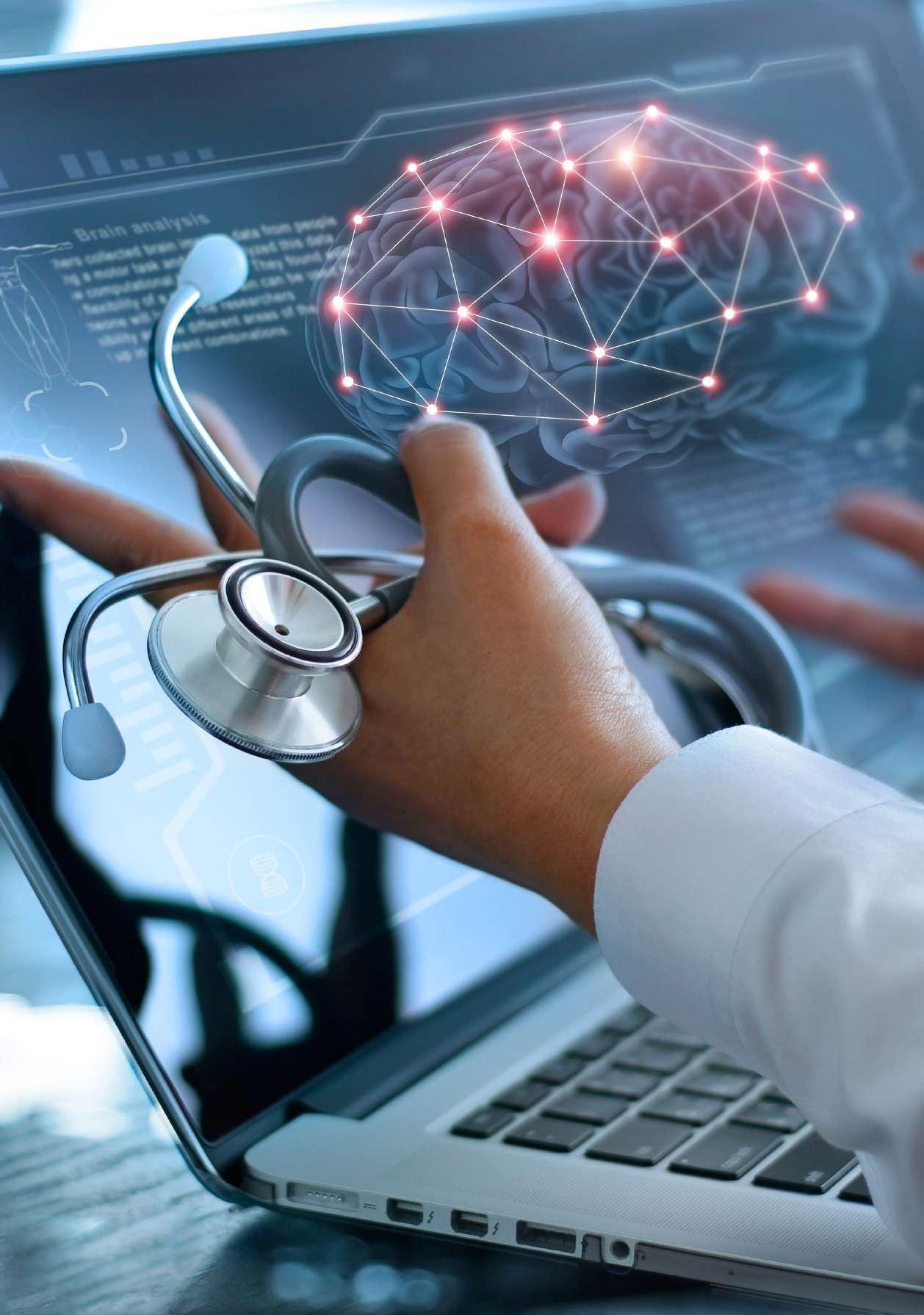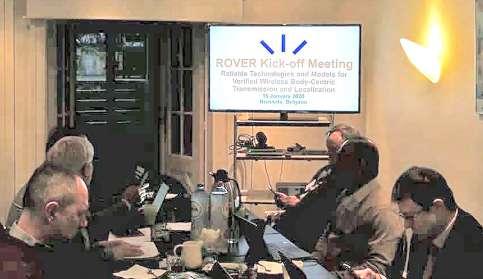
8 minute read
Digital Transformation in Healthcare
By Attaphongse Taparugssanagorn
Advertisement
Digital Transformation in Healthcare
Today’s world runs on rapid, exponential and, above all, perpetual change. The solution is not just industrial revolution, but an overall digital transformation in the things we make and the way we make them. The digitalized world of work enables a business model change that can provide new revenue and move us beyond Industry 4.0, called “Industry X.0.”
DIGITAL TRANSFORMATION
Technology Communication Data Internet of things Automation AI Networking
As Thailand aims within a decade to be the ASEAN digital hub, the government has put forward advancements in this digital transformation. One possibility in stepping forward the game across the industry sector is to first educate the people along with the innovative research. Artificial Intelligence (AI), and Internet of Things (IoT) are the key drivers under the upcoming spectacular infrastructure, 5G wireless technology. Connected things simplify our daily lives, but only if we can trust that they will not be collecting and sharing user data. The utility of Big Data comes into play here. IoT devices can generate a ton of data which can have meaningful interpretations if and only if it is done well. It is this data which helps IoT to change how organizations function. The 21st century is all about big data and analytics. There is a lot of data at human hands which are incomprehensible to our minds. Emerging technologies of today such as AI and machine learning has made it possible to accumulate, understand, and recognize patterns in the collected data offering eligible predictions and improvements only after we can trust that they will not be biased or unethical. 5G will help us connect faster, smoother, and more efficient and will help to advance smart communities and smart cities.

Digital transformation in healthcare is imminent following a similar trajectory as the digital transformation of other industries, like industrials. It has the positive impact of technology in healthcare. telemedicine, AI-enabled medical devices, and electronic health records are just its few concrete examples. Healthcare is under enormous pressure to cut costs and streamline operations, continuing to grow rapidly and will continue to do so with increasing trends in aging and chronic care. Digital technologies, some being developed specifically for healthcare and some coming from other areas, start to show ability to reduce healthcare costs overall while maintaining or improving quality of care. Innovation is the name of the game here, with the main goal of streamlining physicians’ work, optimizing systems, improving patient outcomes, reducing human error, and lowering costs.
Author:
Attaphongse Taparugssanagorn
Associate Professor attaphongset@ait.ac.th Department of Information and Communication Technologies (ICT), School of Engineering and Technology (SET), Asian Institute of Technology (AIT), Thailand
More specifically, the two following technologies are now the pillars for digital transformation in healthcare:
1. Internet of Things (IoT ) Connected Wellness and Medical Devices: Medical devices are becoming increasingly intelligent, connected, and robust for delivering optimized healthcare services. There is even an acronym for it: Internet of Medical Things (IoMT ) aggregating connectivity of medical devices with Information Technology (IT).
2. Artificial Intelligence (AI) in Healthcare:
AI for discovering patterns from connected healthcare monitoring devices as well as patient transactions are providing tremendous opportunities for preventive care. There are many different types of AI preventive care models. In addition to aggregating and mining models from patient data, another benefit of AI in healthcare is to opt for a system of continuous learning within the system itself.
Furthermore, the knowledge harvested from various medical sources including patients, connected devices, and medical staff such as doctors and nurses, can be digitized and automated. The combination between care options mined and discovered from patient data and the knowledge of experts provides increased opportunities in optimizing the patient care. The applications as well as the implication of IoMT and AI for healthcare are tremendous. Here are some examples of healthcare applications with tremendous benefits to the patients as well as healthcare providers:
1.
2. Wellness Tracking: for better health and fitness using low energy sensor devices, such as Fitbit, smart watches and more recently wearables that can monitor heartbeat, temperature, and blood pressure. The data from these devices could be aggregated over time, combined with the knowledge of the best fitness coaches to provide personalized coaching.
Seniors Home Healthcare: a s demographically the baby boomers are about to retire and will constitute a large percent of the population. These seniors typically prefer to be in their homes than in rehab centers or worse hospitals. Connected monitoring and connected devices, including telecare, are providing tremendous opportunities for remote senior healthcare. The connectivity 3.
4. solutions include pill reminders, connected tests, such as for glucose management, and intelligent motion detectors, e.g. for fall detection and protection, irregular movement, or no movement.
Intelligent Hospitals: The aforementioned examples and there are so many others pertain primarily to the connected patient and the various services serving them. As in many other intelligent infrastructure, we are also witnessing the emergence of intelligent hospitals. IoT connectivity has many pragmatic and valuable applications for the overall operation of hospitals. Medical devices can be connected for precision and speed improving the patient experience; the hospital intelligent infrastructure as a building could be improved; and overall administrative efficiency could be optimized.
End-To-End Digitization: With a digital transformation platform, we can realize end-to-end value streams connecting the patient, with her/his data, the healthcare providers, emergency services, and healthcare payers. This ultimate digital transformation in Healthcare needs task orchestration and monitoring through automated digitized processes that monitor, control, and optimize the resolution of preventive as well as emergency care situations. The end-to-end value stream connects the patient, his/ her data, to primary, secondary, healthcare facility and emergency services. This needs an automated process engine to assign tasks and monitor the resolution of a potential emergency care situation.
One of the National Strategy has aimed to enhancing national security in all aspects; in which aspects of developing and empowering human capital; broadening opportunities to improve social equality and equity; improving public administration. These aspects can be achieved with the health strategic development and management

of the health system. Along with Thailand 4.0 by digitally connected health care system of the future, which includes efficient health care, success in reducing costs in public health management, seamless and secure sharing of healthcare data, relevant laws for controlled exchange of data between applications. These will help Ministry of Public Health create opportunities for innovation and adding value to health care services bringing the development and participation in the health system to create value in a long-term for sustainable development.
The Asian Institute of Technology (AIT ) with its expertise in fundamentals of statistical signal processing (estimation, detection, and classification), wireless communications theory, IoT and AI, have been doing research on various fields related to Wireless Body Sensor Network (WBSN) for healthcare, Industrial IoT (IIoT) for automatically recognizing display instruments in factories, early fall detection using WiFi and deep learning, deep learning based music emotion recognition, AI based spectrum sensing and management for advance wireless communications, smart green house, just to name a few.
AIT is one of the secondments in the fouryear European grant called Horizon2020 Marie Sklodowska-Curie Actions, Research and Innovation Staff Exchange (RISE) led by the University of Oulu, Finland. The project focuses on reliable cutting-edge technologies and models for verified wireless bodycentric transmission and localization. In particular, we study and develop advanced solutions for the secure wireless exchange of health data. Information acquired by in- or on-body (wireless) sensors are transmitted to the smart hub for shortterm processing and then to the cloud for longfrom environmental (wireless) sensors, on-demand analysis medical wireless devices, manual inserted data, etc. This requires interdisciplinary efforts in medical ICT, AI (deep learning), /IoT, and big data analysis. Another key objective of this project is microwave localization, which is employed to locate objects and people within a building using signal processing or other sensory information. The following application will be investigated: person localization in homes and hospitals; person movements; tracking; sleep monitoring; heart beat monitoring; breath monitoring. Another application utilizing accurate localization is tracking of wireless capsule endoscope inside a human body, where millimetre accuracy is needed to track endoscope within a GastroIntestinal (GI) track. Both applications fall under the localization algorithm development.
Under the mutual agreement between the University of Oulu and the AIT, and the launched double degree program, students will have an opportunity to work on this challenging research, which has huge impact on health systems, medical instrumentation industry, medical practitioners and of course on the patients. It will allow medical assistance and monitoring moving towards an “distributed care” topology, easing pressure on hospitals as well as encourage enhanced recovery through home or local recovery placements. In addition, it will also enhance the potential and future career perspectives of the members and their students. In addition, at the AIT we will be term analysis. Additional information can come
launching a new Master’s degree program in Internet of Things (IoT) Systems Engineering that students can follow to obtain a firm foundation preparing them for research and a career in the field. At the end of the program, students will be able to understand how to develop and implement their own IoT technologies, solutions, and applications and possibly leverage their research outcomes to address business challenges, for instance, their own startups, companies, or even to change their daily lives happening in individual homes increasing our convenience.
Definitely, Thailand can benefit from the research outcomes, innovation, and potential of manpower of the nation and will gradually undergo a major change towards a “Thailand Health 4.0 - Smart Healthcare.” Under the mutual agreement between the University of Oulu and the AIT, and the launched double degree program, students will have an opportunity to work on this challenging research, which has huge impact on health systems, medical instrumentation industry, medical practitioners and of course on the patients.





